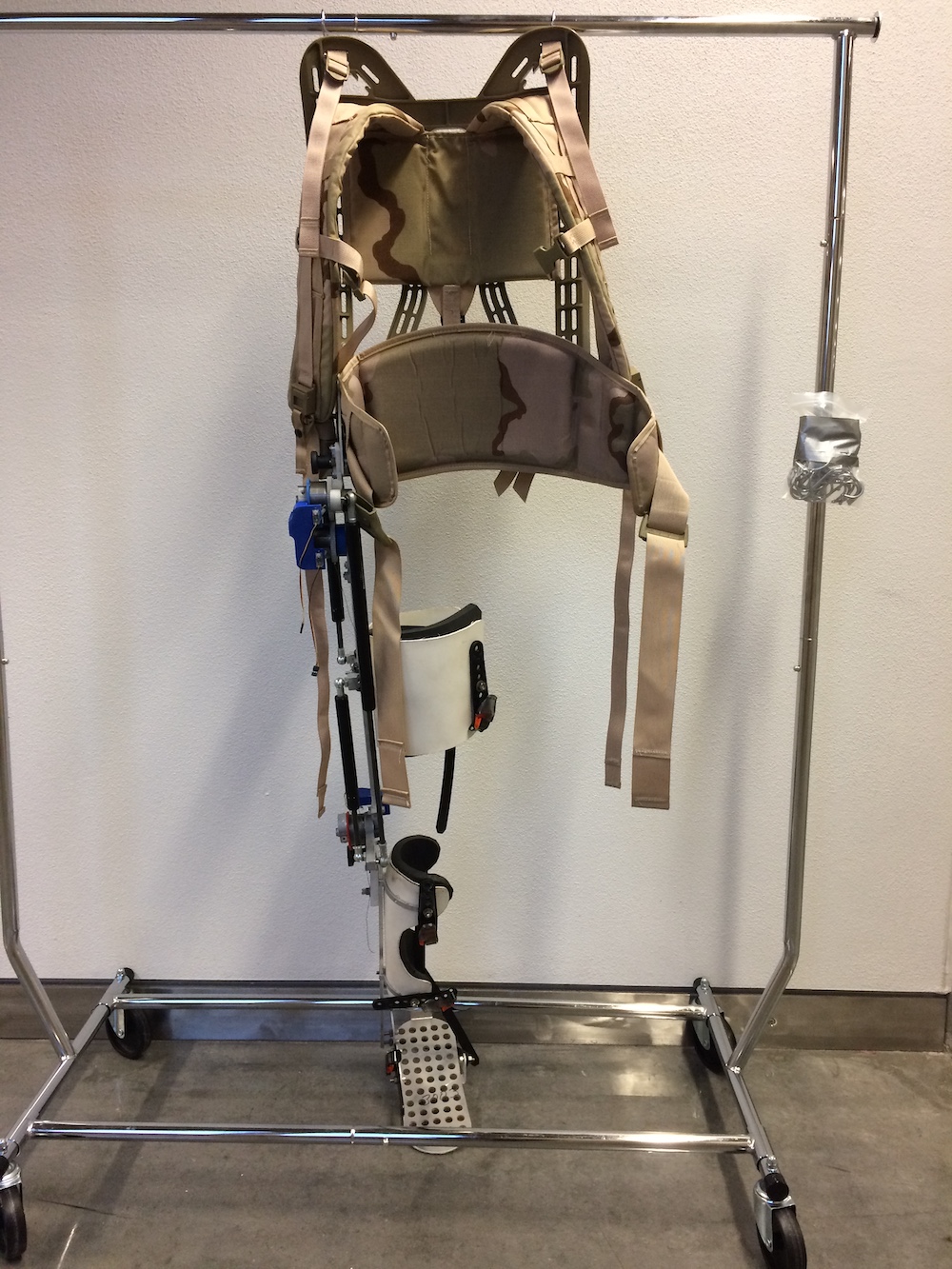ESO exoskeleton, v3

At the Human/Machine Design Lab, I was tasked with developing the body attachment parts for a third-generation exoskeleton. Our goal was to create a lightweight, entirely mechanical exoskeleton (i.e. no motors or hydraulics) for paralyzed patients. Our exoskeleton had to be:
- Comfortable for extended periods of time (2-3 hours).
- Under a 20lb (9.07 kg) weight limit.
- Fit a variety of body types.
- Had to provide ankle support in the form of a platform that the patient stands on.
Technical
Unlike technical engineering problems, designing for comfortability is highly subjective from person to person. Initially, I evaluated almost a dozen current exoskeletons in other Universities. For additional reference, I read The Measure of Man: Human Factors in Design, by Henry Dreyfus.
Initial designs consisted of an aluminum bracket, surrounded by a 3D printed frame that distributed preasure along the thigh and calf. For securing limbs, 1.5” backpack strap was used. Various types of buckles were purchased for evaluation. Even with optimizing the file for strength, and increasing part density, the printed prototypes regularly broke. Instead, we pivoted towards thermoformed plastic. Glass-fiber reinforced polyethylene (PE) sheets were heated in a convection oven, then hand formed.
In all designs, high-density foam was attached to the frame using hook-and-loop (Velcro) strips.
Result

Review
What went well:
- We stayed under our 20lb weight limit, when factoring in both legs.
- Initial testing/measurement were encouraging. Coworker was able to take baby steps without using his muscles.
- Exoskeleton proved comfortable, even with hairy legs
- When I switched labs I successfully transfered my knowledge base, and a checklist of improvements to the person taking over my role.
- We were able to get the project ready in time despite an issue with a knee attachment bracket.
Not so hot:
- I was slow to adjust my long-term scheduling spreadsheet when problems arose.
- 3D printing prototypes took too long, and slowed down the cycle of testing/revising.
- I speced bolts that were overkill. There were plenty of opportunties to save even more weight.